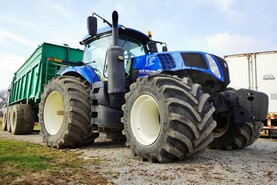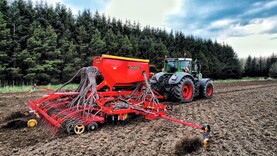As we approach the midway point in April, it is now time to close off silage ground for first cut in early June.
While some farmers always opt for bulk over quality, well-managed ryegrass swards can yield over 10t/acre of grass and still maintain feed quality.
Outlined are five steps to closing off silage swards over the coming week.
1 Graze off any dead material
Ideally, silage swards should have been grazed off to remove any white, dead material at the base of the sward.
While many farmers are reluctant to graze silage ground in the spring, if this dead matter is not removed, then grass yields will not realise their full potential.
A grazed sward will ensure a clean base for grass to regrow once fertilised. In the case of productive ryegrass swards, there is no loss of yield from grazing during early April.
If there is still a build-up of dead matter in the sward, then focus on mob-grazing these swards as soon as possible before closing off for silage.
2 Slurry
Slurry can be a good source of P and K, depending on the source. Slurry produced from dry cows on a forage-only diet will be low in P and K, whereas slurry from intensively finished bulls is an excellent source of nutrients.
Apply slurry to bare ground this week at 2,500 to 3,000 gallons per acre. Applying slurry with a dribble bar will increase nitrogen availability to the sward.
3 Fertiliser
Leave a gap of around 10 days between the application of slurry and bagged fertiliser. Applying both together increases the risk of nutrient loss.
At the optimum soil index of 2 or above, slurry and straight nitrogen will suffice. For ryegrass swards, target 100 units/acre of nitrogen for first-cut silage.
Assume that 3,000 gallons of slurry will contribute around 20 units of nitrogen. Balance this out with three bags/acre of CAN. Opting for a product containing sulphur can boost yields.
On soils with lower levels of fertility, use a compound NPK product along with slurry, as soils will be lacking in phosphate and potash. Again, aim for 100 units of nitrogen per acre between slurry and bagged fertiliser.
4 Spray weeds
If swards have a high presence of weeds, such as docks, use a herbicide to control these persistent weeds while they are still at an immature stage.
Aim to hit docks and other weeds while they are at the small, rosette stage and grass covers are low.
5 To roll or not to roll?
Rolling silage ground is a personal preference. There are merits to both sides of the coin.
Rolling will level ground, thereby reducing the risk of lifting stones and soil when harvesting grass. It will also reduce damage to the mower and forager harvester.
However, to be effective, ground needs to be relatively soft. But this runs the risk of soil compaction issues which eventually affect grass growth and yield.
If you do decide to roll ground, avoid overuse of a heavy roller and travelling on ground which is overly soft.






 This is a subscriber-only article
This is a subscriber-only article









SHARING OPTIONS: